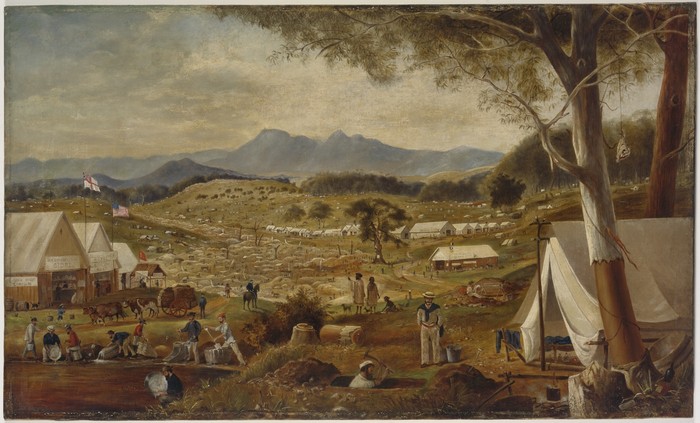
Gold diggings, Ararat
c1858
Oil on canvas
Bequest of Sir William Dixson, 1929
DG 15
Oil on canvas
Bequest of Sir William Dixson, 1929
DG 15
‘It is not only the diggers who make money at the Gold Fields. Carters, carpenters, storemen, wheelwrights, butchers, shoe-makers &c., usually in the long run make a fortune quicker than the diggers themselves, and certainly with less hard work or risk of life.’*
Artists also flocked to the diggings hoping to make their fortune. The British painter, writer and traveller Edward Roper visited Australia at least twice between1855 and the late 1880s. His scenes of the Australian bush and goldfields were especially popular among audiences in England, who were deeply curious about life in the colonies. As shown in the vivid detail in this view of Ararat, his paintings continue to provide a rich record of life on diggings and this extraordinary chapter in Australia’s history.


 Back to list
Back to list